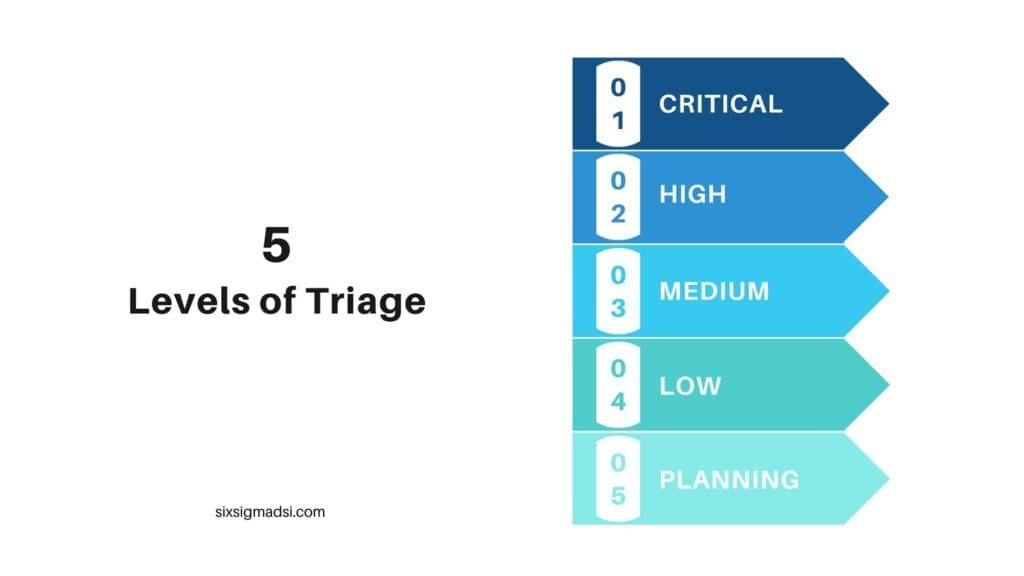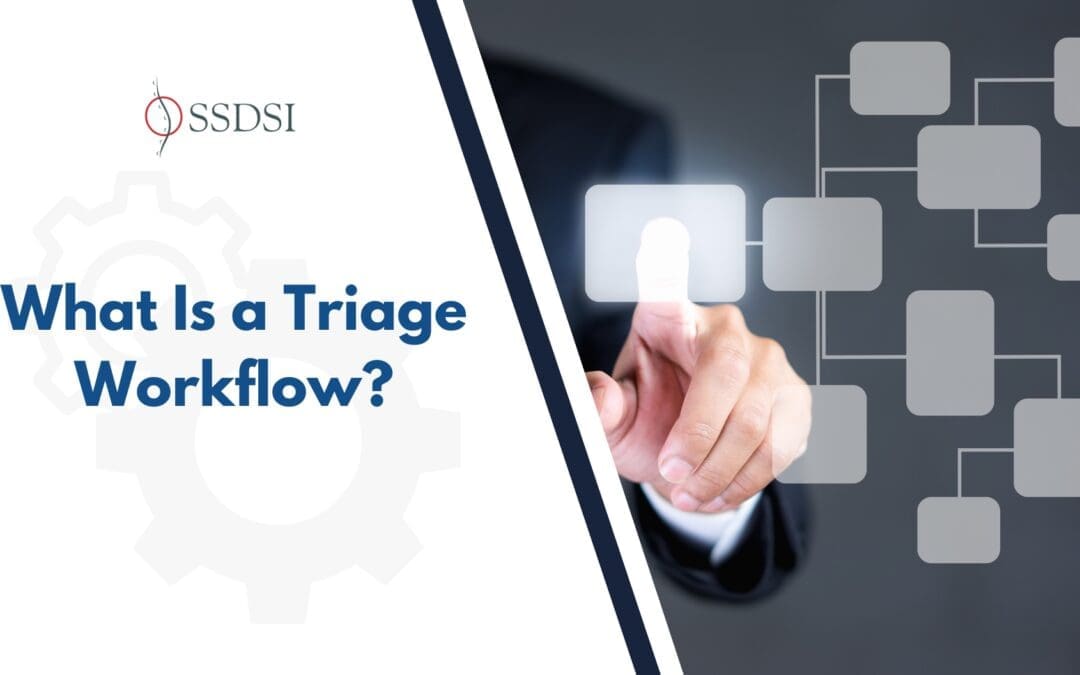Table of contents
Estimated reading time: 6 minutes
What Is a Triage Workflow, and How Does It Work?
In the fast-paced landscape of business operations, effective incident management is crucial for maintaining continuity and addressing issues promptly. One key methodology that plays a pivotal role in incident resolution is the Triage Workflow. This systematic approach ensures that incidents are assessed, categorized, prioritized, assigned, and closed in a structured manner. In this article, we will delve into the depths of Triage Workflow, exploring its definition, the underlying process, the levels of triage, how to establish triage capability, and why it is indispensable for a modern company.
What is a Triage Workflow?
Triage Workflow is a systematic and organized method for managing incidents, issues, or problems within an organization. It draws inspiration from the medical field, where triage is used to prioritize patient treatment based on the severity of their condition. In the business context, triage workflow involves a structured process to assess, categorize, prioritize, and assign appropriate resources to resolve incidents efficiently.
Imagine a scenario where an IT system encounters a critical issue affecting essential business operations. In a triage workflow, this incident would undergo a series of steps, ensuring that the right people address the problem promptly, minimizing downtime and potential disruptions.
How Triage Works

Now that you know the definition of Triage Workflow, we´ll see how it works. The Triage Workflow follows a fundamental process in a company, breaking down incident management into several key steps:
1. Assessment
The initial phase involves a thorough assessment of the incident. This step aims to identify the problem, understand its nature, and gather relevant information. For example, if a website experiences a sudden outage, the assessment phase would involve diagnosing the root cause of the problem.
2. Categorization
Once the incident is assessed, it is categorized based on two key factors: the type of incident and its severity. Categorization helps in organizing incidents, making it easier to prioritize and assign resources effectively. In our website outage example, categorization may involve labeling the incident as a “service disruption” and assigning it a severity level based on its impact on users.
3. Prioritization
With incidents categorized, the next step is prioritization. This involves placing the incident in the remediation lineup according to its severity rating and overall importance to the business operations and functionality. High-priority incidents, such as those affecting critical systems, would be addressed before lower-priority issues.
4. Assignment
Once prioritized, the appropriate person or team is assigned to fix the issue. This ensures that the right expertise is applied to resolve the problem efficiently. In our example, if the website outage is identified as a server-related issue, the server maintenance team would be assigned to address the problem.
5. Closure
After the assigned team resolves the incident, a closure phase follows. During this step, a comprehensive report is filed on the incident. This report documents the actions taken, the resolution process, and any recommendations for preventing similar incidents in the future. Closure ensures that incidents are not only resolved but also analyzed for continuous improvement.
What are The 5 Levels of Triage?

Triage is often organized into five levels, each representing a different level of urgency and severity in a company:
- Critical (Immediate): Requires immediate attention and resolution as it poses a significant threat to business operations.
- High: High-priority incidents that need prompt resolution but may not have an immediate impact on critical business functions.
- Medium: Issues that require attention but have a lower impact on operations and can be addressed in a reasonable timeframe.
- Low: Incidents with minimal impact on operations and can be resolved at a lower priority.
- Planning (Routine): Non-urgent issues that can be planned for resolution during regular maintenance or scheduled downtime.
How to Establish Triage Capability
Establishing a triage capability involves addressing various elements to ensure a smooth and effective incident management process in a company. Here are key aspects to consider:
Types of Events
Define the types of events that require triage. This could include system outages, security incidents, software glitches, and other disruptions.
Skill Levels
Identify the skill levels required to address different types of incidents. Ensure that the assigned teams or individuals possess the necessary expertise to resolve specific issues.
Channels of Support
Establish clear channels of support for reporting incidents. This could include help desks, online forms, or dedicated communication channels to ensure that incidents are reported promptly.
Communications
Define communication protocols to keep stakeholders informed throughout the triage process. Timely updates help manage expectations and provide transparency.
Service-level Agreements (SLAs)
Implement service-level agreements that outline the expected response and resolution times for different levels of incidents. SLAs set expectations for incident resolution timeframes.
Automated Triage Technology
Consider the use of automated triage technology to streamline the incident management process. Automation tools can help in the assessment, categorization, and prioritization phases, saving valuable time and resources.
Funding
Ensure adequate funding for triage capabilities. This includes investing in technology, training, and resources to maintain an effective incident management system.

Why is Triage Important?
In the dynamic and complex landscape of modern business, companies face numerous challenges and incidents daily. These challenges can range from technical glitches and system outages to security breaches and operational disruptions. Given the limited resources and time available, management must prioritize issues that present the greatest threat to the organization’s ability to conduct its business and serve customers.
Triage is important because it:
- Prioritizes Critical Issues: Helps organizations focus on critical issues that have a significant impact on operations.
- Optimizes Resource Allocation: Ensures that resources are allocated efficiently by addressing high-priority incidents first.
- Minimizes Downtime: Rapid response and resolution of critical incidents minimize downtime, reducing the negative impact on business operations.
- Enhances Customer Satisfaction: The swift resolution of issues leads to improved customer satisfaction by minimizing disruptions to services.
- Facilitates Continuous Improvement: The closure phase of triage allows organizations to analyze incidents and implement measures to prevent similar issues in the future, promoting continuous improvement.
The Triage Workflow is a structured and effective approach to incident management. By following a systematic process of assessment, categorization, prioritization, assignment, and closure, organizations can address incidents promptly and efficiently. The five levels of triage provide a framework for prioritizing incidents based on urgency and severity. Establishing a triage capability involves addressing key elements such as skill levels, communication protocols, and the use of automated technology. Triage is essential for a modern company, enabling it to navigate challenges, minimize disruptions, and enhance overall operational resilience.
As we wrap up our exploration, it’s crucial to emphasize the significance of a clear triage definition in shaping effective workflows. Understanding the triage definition not only establishes a common language within the organization but also serves as the cornerstone for implementing strategies that enhance responsiveness and minimize disruptions. The Triage Workflow, with its focus on precision and efficiency, becomes an indispensable tool in the arsenal of businesses navigating the dynamic landscape of incident management.



















